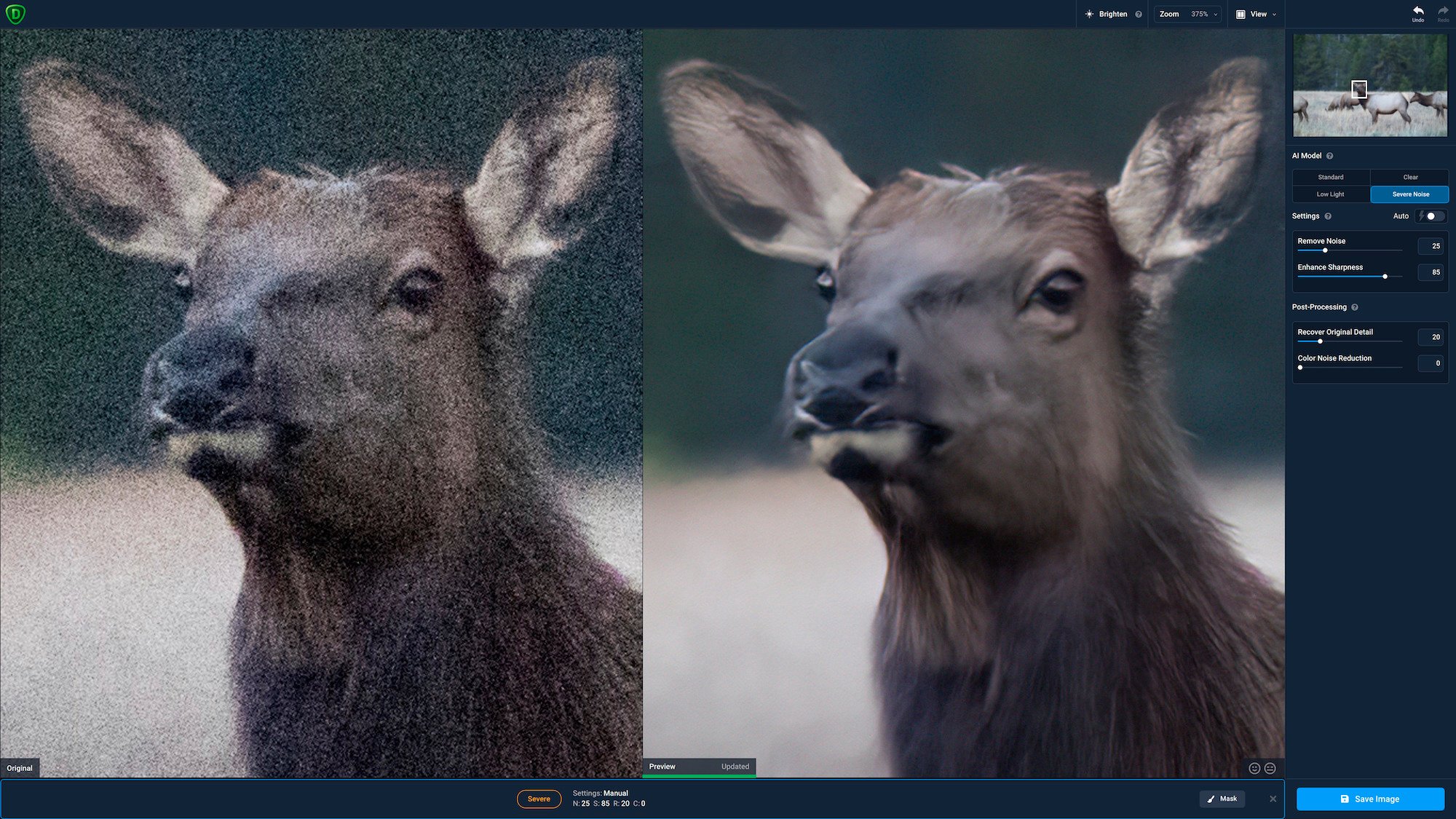

It does not explain why AI Denoise might be slower than Topaz or others on the same images. Of course, this only looks at performance within Adobe AI Denoise alone. An older computer lacks both, forcing rendering to the CPU, which takes many times longer, and costs a lot more power and heat. This looks very similar to video editing, where newer computers render video very quickly because they have both a powerful GPU and hardware acceleration for popular video codecs. In my tests, while the GPU is very busy, the CPU is very quiet during AI Denoise, with other background processes using more CPU than Lightroom Classic. That GPU model was released the same year as my laptop.) (I notice that D Fosse above only took 33 seconds using an RTX 3060 with 12GB VRAM.
Denoise ai windows#
On the Windows side, I wonder if times are consistently faster using an NVIDIA GPU new enough to have their more recent AI acceleration hardware.
Denoise ai mac#
The Neural Engine is only in Apple Silicon Mac processors, which might help explain why owners of older Intel CPU based Macs are similarly reporting much longer AI Denoise times in the minutes. And that machines with older AI acceleration hardware, or none at all, will have to take longer. My hardware list is at the end…really nothing special from a CPU/GPU point of view, so I strongly suspect it’s the Neural Engine machine learning hardware acceleration that cuts the times. I just did some tests and below is what I got. On my mid-range but recent laptop, I have so far never seen a Denoise time longer than a minute. Hardware acceleration specifically for machine learning/AI might be a missing link that helps explain why some computers can process AI features so much faster than others, and might help explain why older computers take much more time. The use of AI Neuronal Network technology in OptiX 5.0 to enhance the process of denoising and cebas' engineering work on finalRender's trueHybrid™ technology offers a bright future towards higher quality photo-realistic images in much lesser time.I think the Ian Lyons post that Victoria linked to may hold part of the answer to this.
Denoise ai software#
Our very first integration tests revealed right from the start that NVIDIA has created an exceptional piece of software engineering by combining the power of AI and their powerful GPU hardware to surmount what has bothered every single GPU software developer for years - Noise in the image. This image shows the OptiX AI-Denoiser running in finalRender at 100 samples after only 45 seconds of rendering. Users can expect ongoing innovative updates as finalRender progresses.

Our new finalRender's latest addition is the NVIDIA's OptiX 5.0 AI Denoiser feature.

Following the launch of our latest finalRender trueHybrid™, cebas' mission as always, is dedicated to getting the most sophisticated renderer into the hands of the artists affordably by incorporating latest NVIDIA GPU technology combined with cebas CPU enhancements, to achieve a powerful as well as an unique mix of processing power. Cebas Visual Technology, founded in Heidelberg, Germany and headquartered in Victoria, BC Canada, has been developing 3dsMax plugins for visual technology since 1988.


 0 kommentar(er)
0 kommentar(er)
